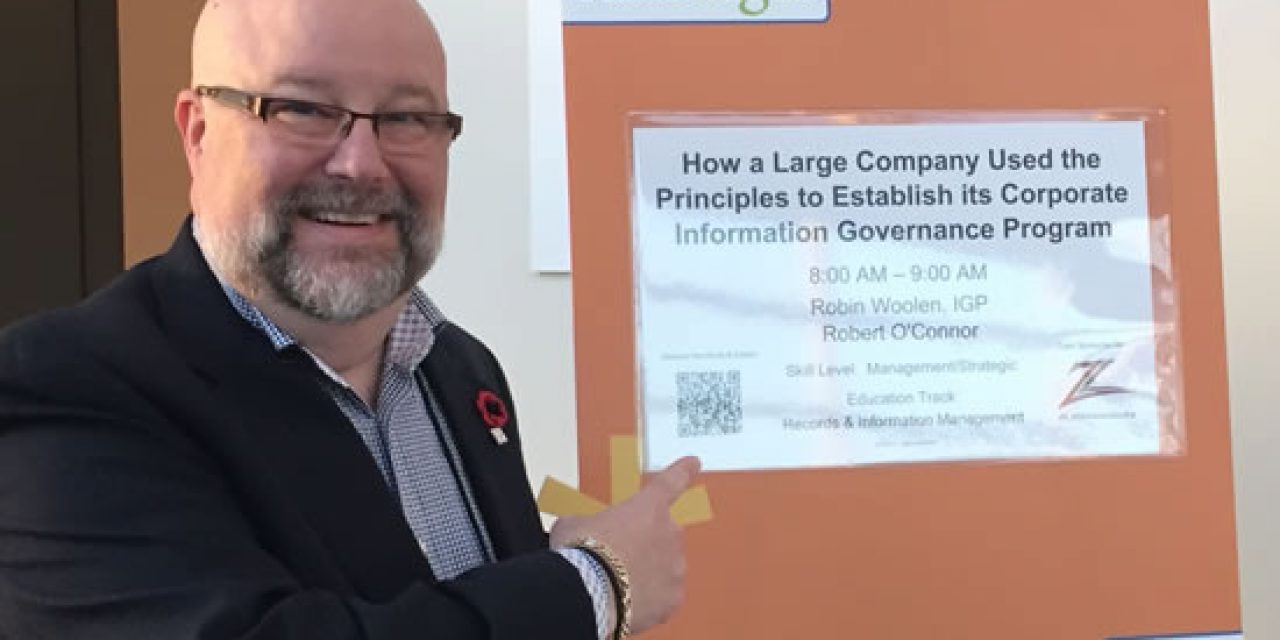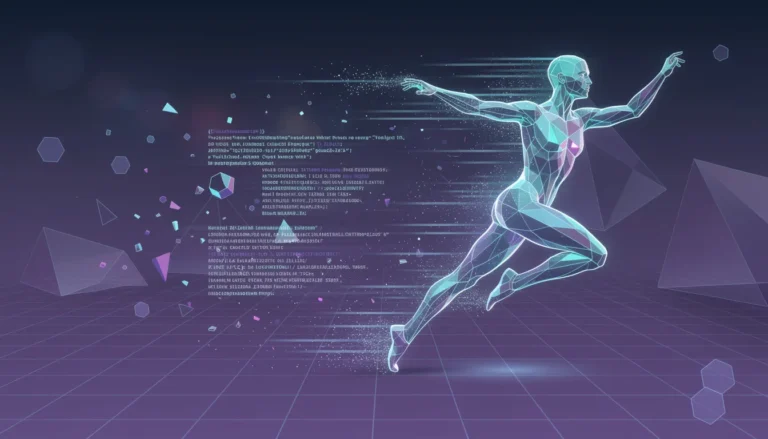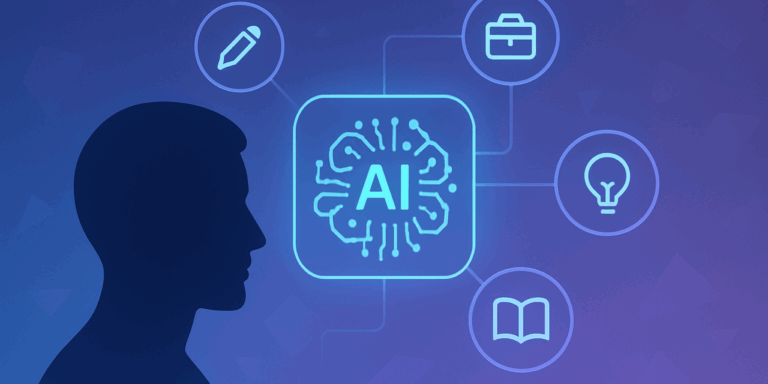One of the crucial aspects of information management is information governance. Robin Woolen, also known as the name of his information governance consulting practice, The Records Guru®, is a globally recognized expert in the field of information governance.
In this interview Robin Woolen looks back at the evolutions regarding information governance (IG) since he became active in the field twenty years ago, the developments in IG and best practices and lessons.
You have been active in the information governance field, before anyone even called it like that. Which information governance facts, strategies and truisms still stand since you have started in 1994?
Robin Woolen: An undeniable fact in information governance is that people produce information on a daily basis that is important to them and will keep and maintain that information for as long as they feel it has value.
The value could have roots in a legal or regulatory timeframe or an operational need, but regardless people will keep it close at hand in case they ever need to find it again.
A truism that stands the test of time is people have “their stuff” that they need to do whatever it is that they do and they are very reluctant to share or relinquish it to someone else.
The basic strategies of storing, filing and maintaining information has largely remained the same since long before I joined the field. However those same strategies that work so well with hardcopy information can be difficult to translate when dealing with electronic information.
The most important fact in information governance is that you must have a strategy in place to deal with the information your people produce or they will come up with their own. Nothing epitomizes unstructured data like trying to sort through other people’s filing systems.
The convergence and integration of silos and systems has created the rise of what we now call Big Data
The impact of Microsoft Windows and Document Management Systems
In the 20 years you have been active in information governance, a lot obviously has changed, probably even too much to sum up. What are the key changes that affected information governance in practice, according to you?
Robin Woolen: Actually I came into the field specifically because of those changes. Most people started as file clerks, administrative assistants or librarians and became Records Managers. I started out as a database developer, business analyst and worked my way up to a Project Manager implementing information management systems for Fortune 500 companies.
So, whereas Records Managers had to adapt from a hardcopy based system to the electronic world, I saw the strategies they had and incorporated them into the way a database was developed and used by my clients. In many ways I had an easier task because I already understood the technology and only needed to learn the structure.
In my opinion the key change came when the business world adopted Microsoft Windows as a standard. This allowed everyone to create their own file folder “tree” to store their information which is the standard in unstructured data – the bane of all of us in the industry.
Another change was the rise of Document Management Systems. These were structured platforms specifically designed to store, maintain and protect an organization’s records. I was fortunate to work for a company that was one of the first implementers of Documentum, a recognized standard in Document Management Systems.
I have worked with most of these systems over the years and like to say I am technologically agnostic. Regardless of the system, the underlying strategies are the same. It is up to the organization to create the policies and procedures that work for their business and implement the system that helps to create the efficacies of those policies and procedures.
The basic strategies of storing, filing and maintaining information has largely remained the same since long before I joined the field. However those same strategies that work so well with hardcopy information can be difficult to translate when dealing with electronic information. (Robin Woolen).
On your website you have an information governance 101 section, with the four W’s of information governance, definitions and much more. Looking at the vast amount of terms and definitions that exist, what should we really know about records management, information governance, information lifecycle management and how it is all connected?
Robin Woolen: The Information Lifecycle is quite simply the process information goes through from origination to final disposition.
Records Management comes into play when an organization’s information is classified into something that should be saved (i.e., a Record) and the process of maintaining it throughout the Information Lifecycle. Information Governance is a more holistic approach that encompasses all forms of an organization’s information, how is it maintained, used and disposed of (if ever).
One Version of Truth: information governance challenges
It is said that many organizations have a culture of keeping everything. However, sometimes it’s obligatory to delete information and in these times where information and data volumes explode, there are also risks and costs in having such a mentality. How would you typically recommend organizations to focus on what information they need to focus on?
Robin Woolen: A strategy I use is asking how much an organization spends to maintain their current infrastructure and the cost of their upcoming expansion to it — keeping everything means you are always adding more servers and/or storage space. My next question is how much of the current infrastructure the client believes is duplicate information? When you couple these questions with the commonly held statistic that less than 15% of an organization’s information are truly Records, the client begins to understand the value proposition in deleting information.
When you are dealing with an organization that has a risk of litigation you have to stress that the client simply must follow their disposition schedule. In order to prove defensible disposition in Court you must show that you have a disposition schedule and that it is followed in all cases. Any deviation from the published schedule may result in the Court deciding the organization doesn’t actually have a legitimate process.
Over the last few decades we have gradually created information silos. With the consumerization of IT, workers even have created their personal information silos. How can anyone still find anything, let alone govern it or find it fast, in this chaos? What are the risks and solutions?
Robin Woolen: We’ve touched on some of the risks of these silos, such as unnecessary expense. The issue of information duplication has an added risk of the ability to identify which copy is the actual Record? In information governance we strive to have records that are trusted as legitimate by the Users. I call this identifying the “One Version of Truth.”
How many times have you had a report that needed to be reviewed by a number of people? What you probably did was attach the report to an email and send it out to the group. Each member probably reviewed the report, marked it up and sent it back to the group, etc., etc., etc. In this scenario which copy is the Record? One solution is to have the report in a Portal and drive the group to a single copy with version control applied to it. This reduces the individual silos, duplication and the time it takes to find what you are looking for.
It seems that, even if there is more data and information than ever before, at the same time we’re seeing a convergence and/or integration of silos and systems. It seems as if the need to have a single customer view and a more connected business culture focused on process optimization, leads to this convergence. It is even said that information management is the result of this convergence. What are your opinions on this?
Robin Woolen: I see it as the other way around. The convergence and integration of silos and systems has created the rise of what we now call “Big Data.”
The ability to view and manipulate disparate data streams to gain previously unreachable insights into customer behavior is just beginning to yield value for an organization. However that only strengthens the case for information governance in my opinion because you must first ensure the data is scrubbed and validated before you can begin to base strategic plans on it.
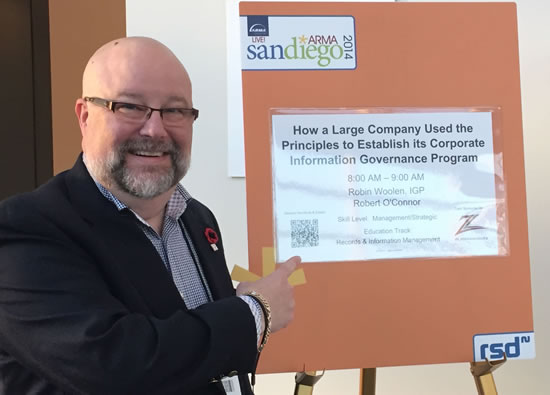
Information governance, cultural ambivalence and a wakeup call
What is the key information governance challenge today in your opinion?
Robin Woolen: Undoubtedly the primary challenge we face is an organization’s cultural ambivalence toward information governance. For decades Records Management has been relegated to the basement or some out of the way warehouse where you only went when you needed to find some historical document. There was a disconnect between the business, its information and the value of that information.
There was trend analysis to be sure, but people lost sight of the ability to utilize that information to improve an organization’s bottom line. Big Data is changing that perception.
We can’t overlook it: ever more unstructured data, more digitization, social, big data and soon the Internet of Things, to name just a few. The nature, diversity and sheer volume of data and information is evolving faster than ever. What are the implications of all these evolutions regarding information management, according to you?
Robin Woolen: To me it is a wakeup call to Records Managers to get out of their offices and start making the case for the value they represent to their organizations. This is a golden opportunity to integrate with the Legal, Compliance and Information Technology departments and start making the changes an organization will need to meet these challenges.
For decades Records Management has been relegated to the basement or some out of the way warehouse where you only went when you needed to find some historical document. There was a disconnect between the business, its information and the value of that information. (Robin Woolen)
Takeaways from the ARMA International Conference 2014
You were at the ARMA International Conference recently. In a pre-event interview you mentioned you were looking forward to learning the latest news and impact of the ever-changing legal and regulatory environment on information governance. What did you take away in this regard?
Robin Woolen: The Conference is a great place to gain the latest industry insights and I recommend it highly to anyone for just that reason. I took away the sense that the changes in the United States’ Federal Rules of Civil Procedure will only serve to elevate the visibility of information governance as a practice in the eyes of the Legal community. These changes speak to the new sources of information you spoke about in the previous question. Legal departments will depend on an organization’s information governance professionals to maintain all of this information in order to mitigate risk.
In the same interview I also read you were particularly interested in information governance and social media. You do have an impressive presence on social media. What should information governance practitioners know about the information governance dimension of social?
Robin Woolen: One of the goals of my social media presence is to expand people’s view of what a Record can be. Many organizations and, indeed, many of their information governance staff fail to realize that what the organization publishes on its social platforms are Records and need to be maintained as such.
The trick is knowing how best to maintain it. Without getting too deep into it, I prefer to maintain Social Media as a WARC (Web Archive) file for the ease of production and utility. There are several third party vendors that can assist in this.
You also hosted a session yourself on how a large company applied the principles of information governance to establish its corporate information governance program. Can you share a bit about those principles and lessons learnt.
Robin Woolen: The Principles™ refer to the ARMA International Generally Accepted Recordkeeping Principles®. My session was a case study wherein I applied an analysis process based on The Principles™ to baseline and then chart the organization’s progress in establishing its first information governance program in its 100+ year history.
The process is similar to what would be used with ARMA International’s NextLevel IG Assessment tool.
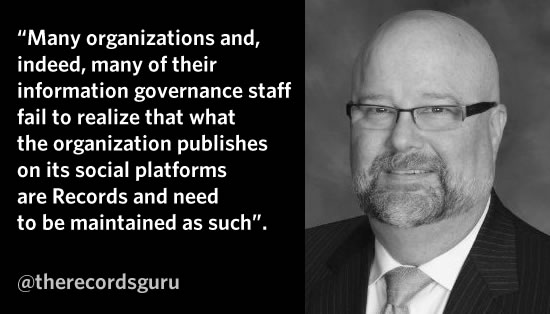
Information governance value and costs
Records management was traditionally about Governance, Risk and Compliance. As part of a more holistic information management approach, how is information governance evolving in this GRC context?
Robin Woolen: The underlying principles of Records Management are the foundation of Information Governance. The difference is in expanding these principles into creating policies and procedures around how and where the information is maintained, who manages and/or has access to it and when to dispose of it.
An example of this would be involving, or at least notifying, Information Governance in the procurement process so that the potential information source can be identified and accounted for in the organization’s overall strategic plan. A common information governance axiom is “You don’t know what you don’t know.” In this case this means how can you govern information you don’t know exists?
Again in that broader context: the focus in information management is increasingly on business and customer value. Information governance has a cost but also creates value. How does it fit in that broader value picture? What are the hidden costs? Hidden benefits?
Robin Woolen: Coincidentally, I noted a study a couple of months ago by Nucleus Research that reported Enterprise Content Management delivers $7.50 for every dollar spent, up from $6.12 two years ago. That is a very persuasive figure, but of course there are always hidden costs with any project. The most common I find relate to data migration or digitization. When moving into a new system you have to account for records produced with obsolete software.
Generally speaking you are required to be able to produce a record you maintain as such. How would you do that when the data is on a floppy disc over time? If you keep it, you will need to migrate it to some format that can be read while maintaining the data’s integrity. Therein lies the cost. Digitization of hardcopy information has a similar cost issue. In both instances it may be a better plan to maintain the information as is if the information in question has a relatively short life span given the organization’s disposition schedule. It is a judgment call that needs to be made on a case by case basis.
The role of technology
What technological evolutions do you see playing a more important role in information governance? Do you see more digitization? The role of artificial intelligence? Anything else?
Robin Woolen: One of the most exciting things to me about being an information governance professional at this point in time is that technology has finally evolved to allow us to do what we have always wanted to do — make information governance easier to accomplish as a business process.
Let’s face it: information governance is boring and will always be seen as something that detracts from a person’s “real job.” With technology we can accomplish what we’ve never been able to depend on people to do with any certainty.
There are systems that allow us to imbed information governance policy into a scripted business process. We can effectively hide information governance from people and yet still accomplish what the organization needs to protect its information assets without interrupting the normal course of business. There are other systems that utilize predictive coding to impose information governance rules behind the scenes in a similar fashion.
It is truly an amazing time and I enjoy being a part of it.
